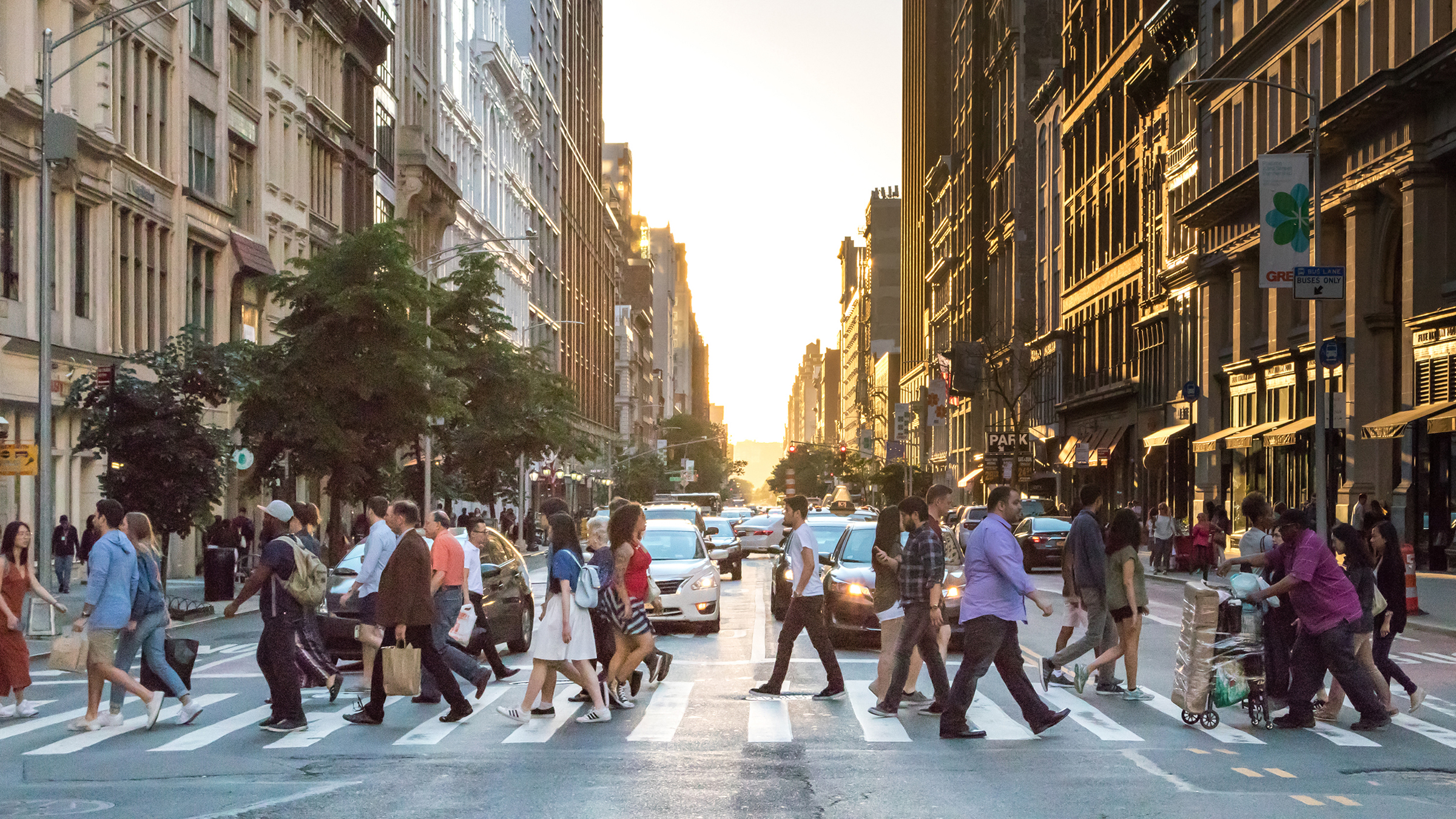Design Connections: Exploring the City as a Precedent for the Workplace
Asserting that the workplace is like a city, Clark Nexsen’s Paul Battaglia breaks down the ideals of how cities function, workplaces thrive, and how combining the two through a demonstrative marriage of architecture and design can serve as a catalyst for the generation of bright ideas and organizational success.
w
For organizations looking to maximize daily productivity, it is important to consider the correlation between employee satisfaction and work environment. On the surface, it takes very little to conjure a functional “office.” An internet connection, a chair and some coffee are elementary – but a thriving workplace demands more. In its conventional form, the office, like the company, is a social organism.
As a functional communal system, it is formulated on the claim that through cooperation and collaboration, a group dynamic delivers stronger results than an individual. Offering intriguing parallels, a city is a vibrant and dynamic physical environment that equally supports achieving goals through collective action. Cities are teeming with diverse space types, opportunities for interaction, and exposure to new concepts. In the workplace, innovation is inspired in much the same way, making the city a valuable model for crafting environments in which employees excel.
“The city is human creation par excellence.” — Aldo Rossi
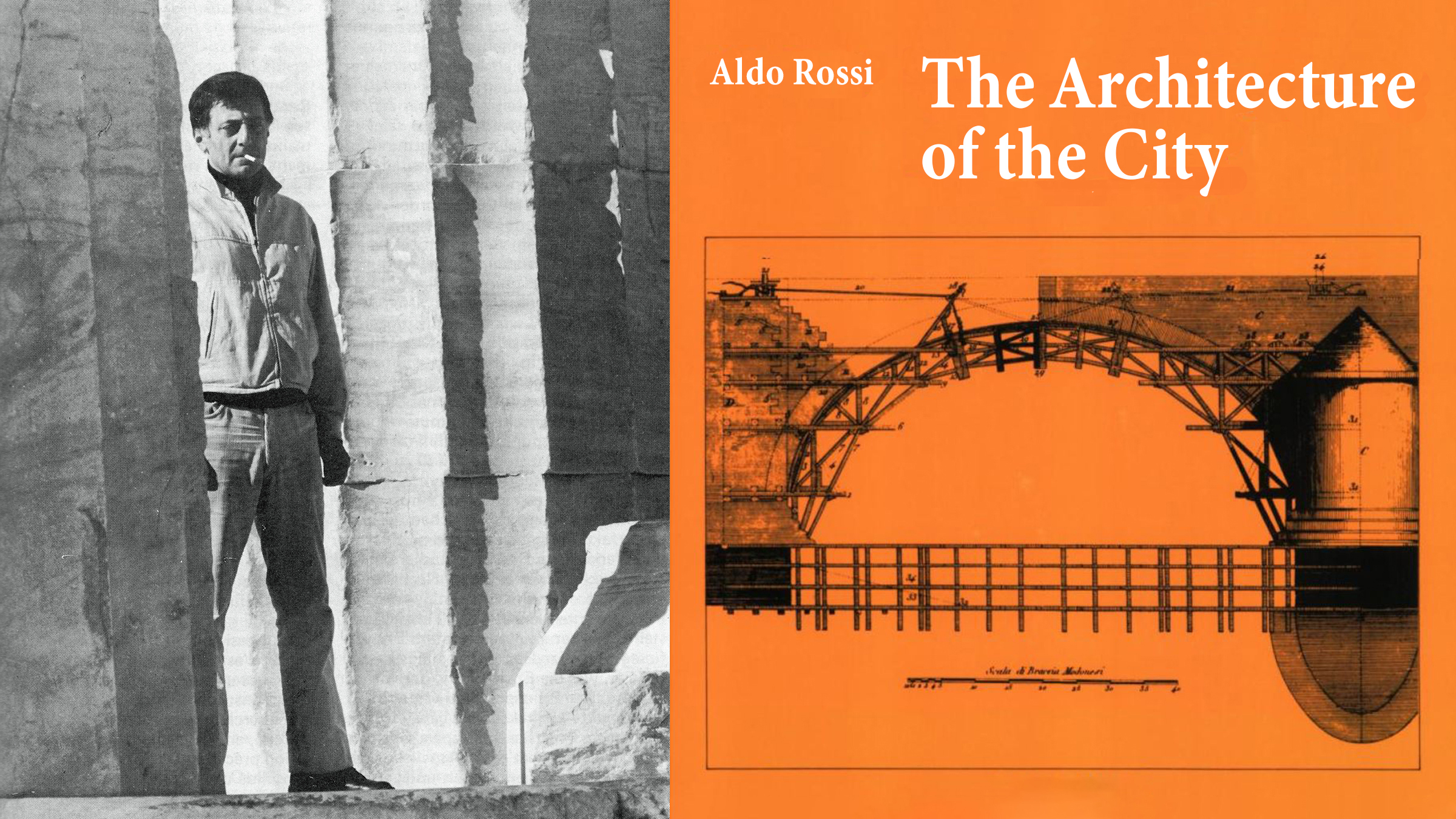
Left: Aldo Rossi at the Parthenon (1971). © Eredi Aldo Rossi, courtesy of Fondazione Aldo Rossi. Right: The Architecture of the City, by Aldo Rossi originally published in 1966.
There are three essential components to consider when cultivating a workplace design strategy in line with that of a city. While each functions on its own and serves a singular purpose, collectively they foster a flourishing organization with high employee morale.
Physical Environment
Many of the environmental elements that populate a city can also be found in the workplace, albeit in a different form; e.g., a city’s town hall becomes the conference room, while the well or fountain corresponds to the coffee pot. In the grander scheme, a city accommodates and supports the systematic and prolific division of labor, or ‘specialization.’ In the same way these physical elements contribute to a physical performance, they also influence overall morale. The physical environment of a space affects the way we feel, exist, and subsequently, perform. Just as a city might promote citizen satisfaction by installing community parks, keeping the sidewalks and streets clean, or bringing in a variety of restaurants that can appeal to a diverse range of people, a workplace should consider the needs and feelings of its employees through layout and physical design.
The inclusion of varied space types to serve different work styles, a balance of private and public space, opportunities for planned and impromptu interaction and, considering what promotes wellbeing, such as plentiful daylighting, are all factors that build a strong physical environment. Consider that we could play racquetball in a restroom, but it wouldn’t make for a very good game. However, when creativity and activity occur in a hospitable and supportive environment, they flourish. The city offers dedicated and often overlapping zones/neighborhoods for its activities (which makes it tempting, but usually not very convincing, to directly apply urban planning practices to workplace design).
A good workplace is an assemblage of environments - or zones, or neighborhoods - capable of supporting various anticipated activities, whether that is leading, designing, analyzing, meeting, or teaching.
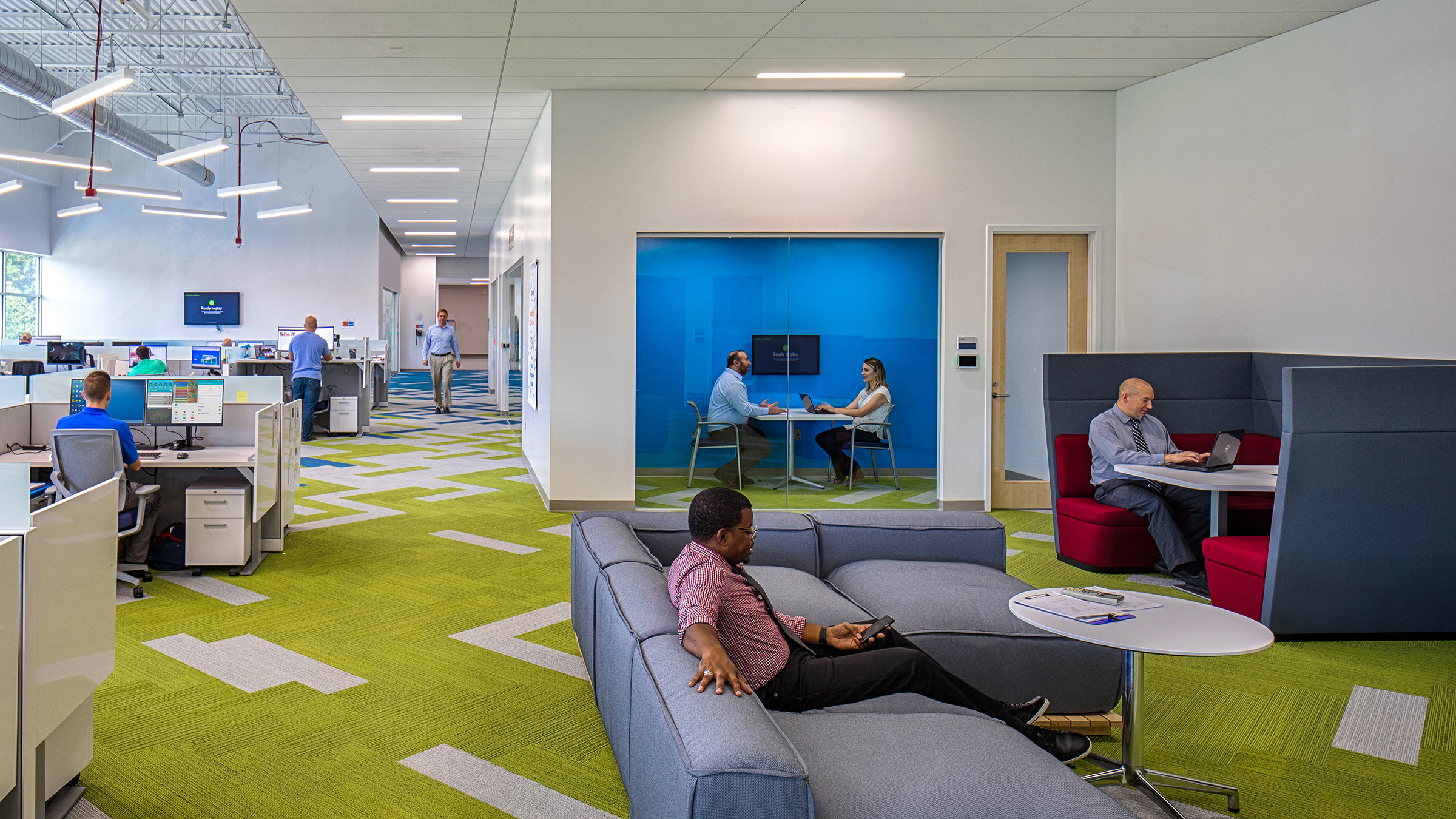
The physical environment captured above integrates collaboration spaces adjacent to the open office area, encouraging interaction with a mix of soft seating, high tables, and nooks. As an ecosystem, these spaces work with shared areas like the training room and kitchen to offer employee choice and ensure comfort. Photo by Tzu Chen.
Sense of Belonging (Culture)
The most intriguing and inspiring aspects of a city are its resilience and social attributes. The city offers protection and its rites and traditions – its culture – permit and sustain belonging. A city reminds its inhabitants that they belong, have a safe place for self-expression, and most importantly, share a future. The office and its culture should do that too.
Employees typically spend 40 or more hours a week in the workplace; inherently, the physical environment must align with and promote the corporate culture to effectively support employees’ satisfaction and sense of purpose. A strong interior upfit can play a significant role by reflecting the organization’s culture and goals, from its spaces to its aesthetic.
The color palette, generous natural light, office layout, and inclusion of innovative spaces all impact how employees perceive their company’s culture and vision. When culture is strong, performance can thrive, and employees will feel a natural sense of belonging.
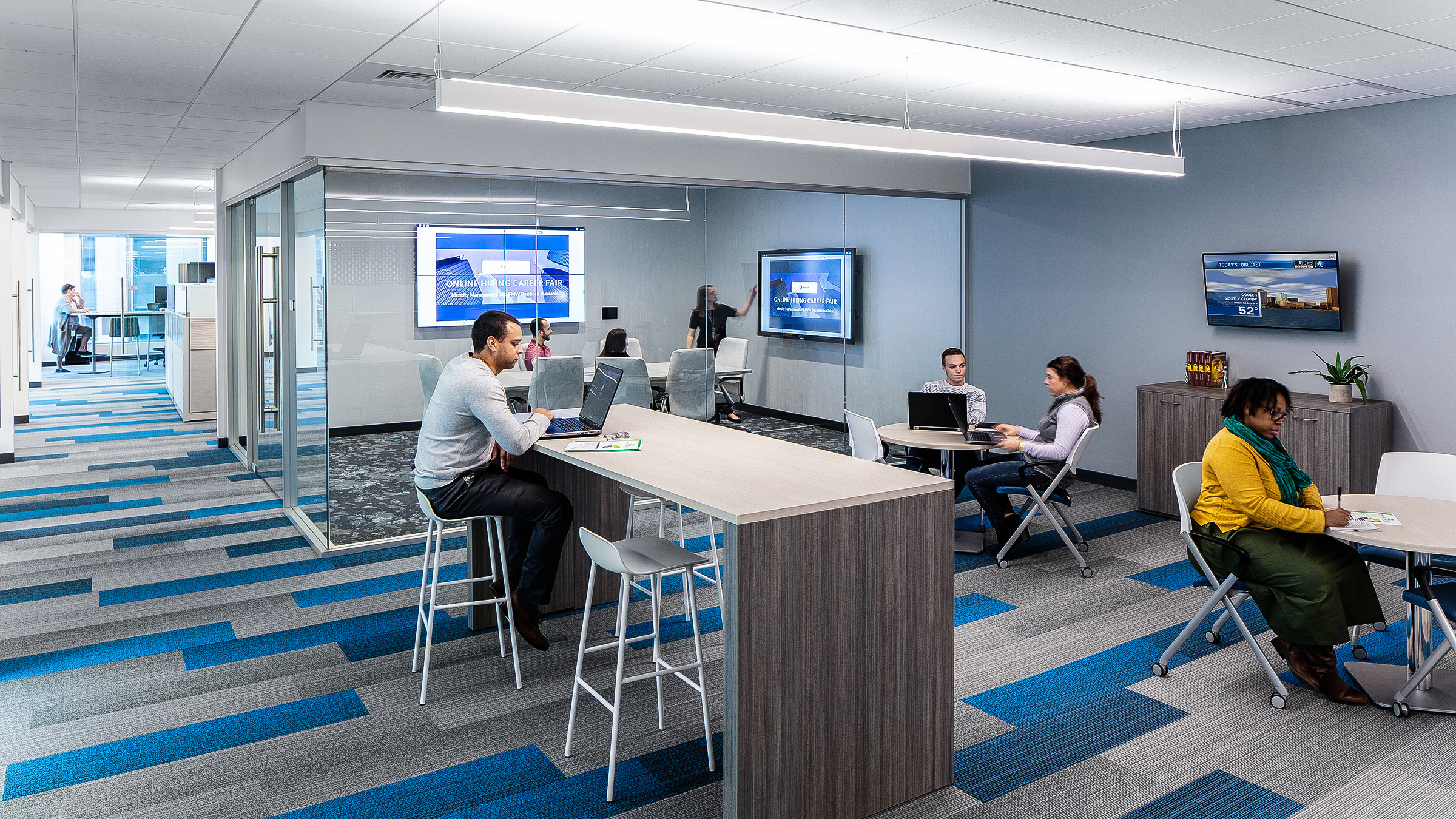
At Mythics, Inc. an innovation lab and adjacent collaboration zone is a physical embodiment of their cultural emphasis on great, outside-the-box thinking. Photo by Keith Isaacs.
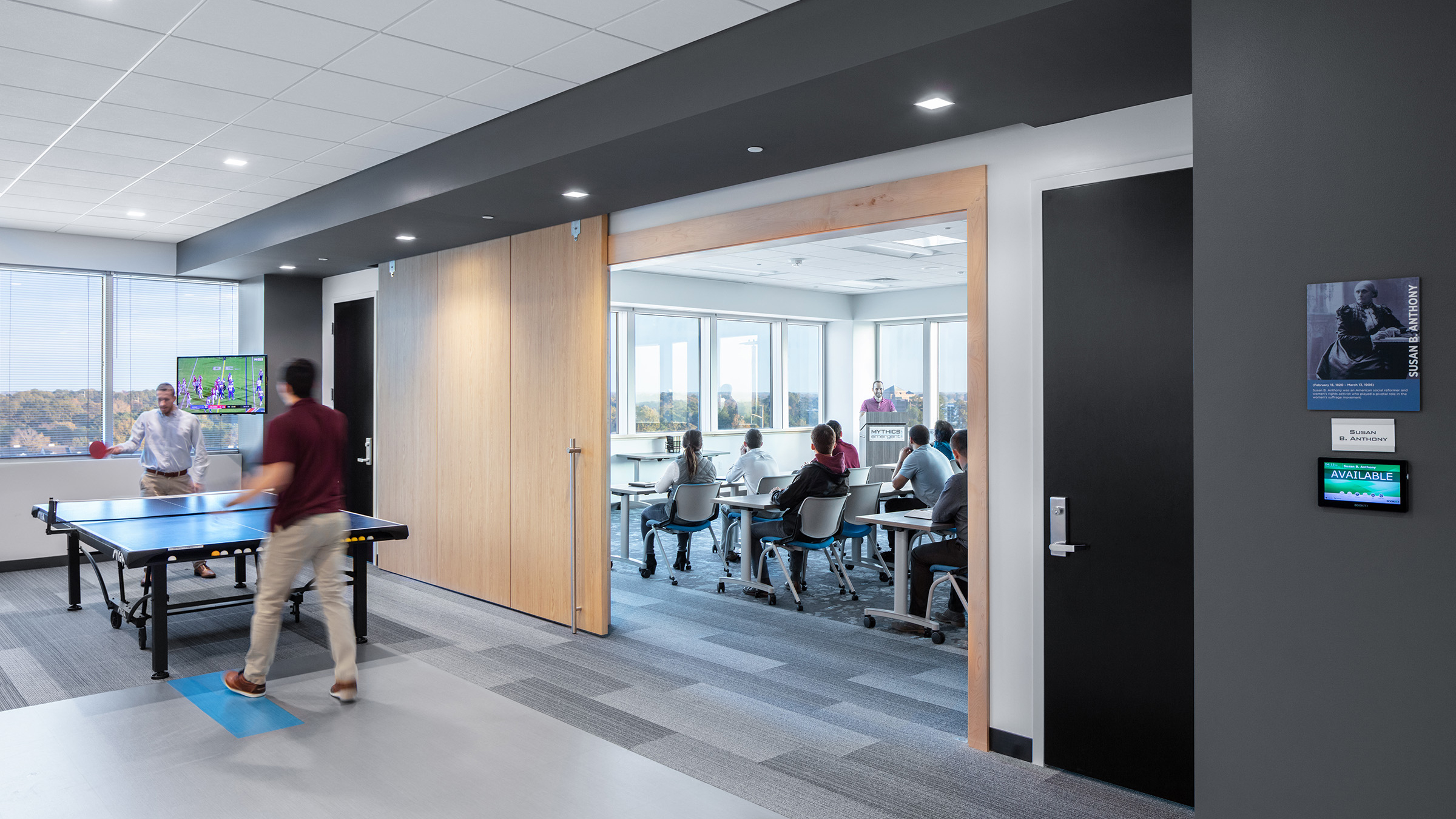
With a large meeting and training room aligned next to a game space, the Mythics’ layout brings to life their core values of both fun and excellence. Photo by Keith Isaacs.
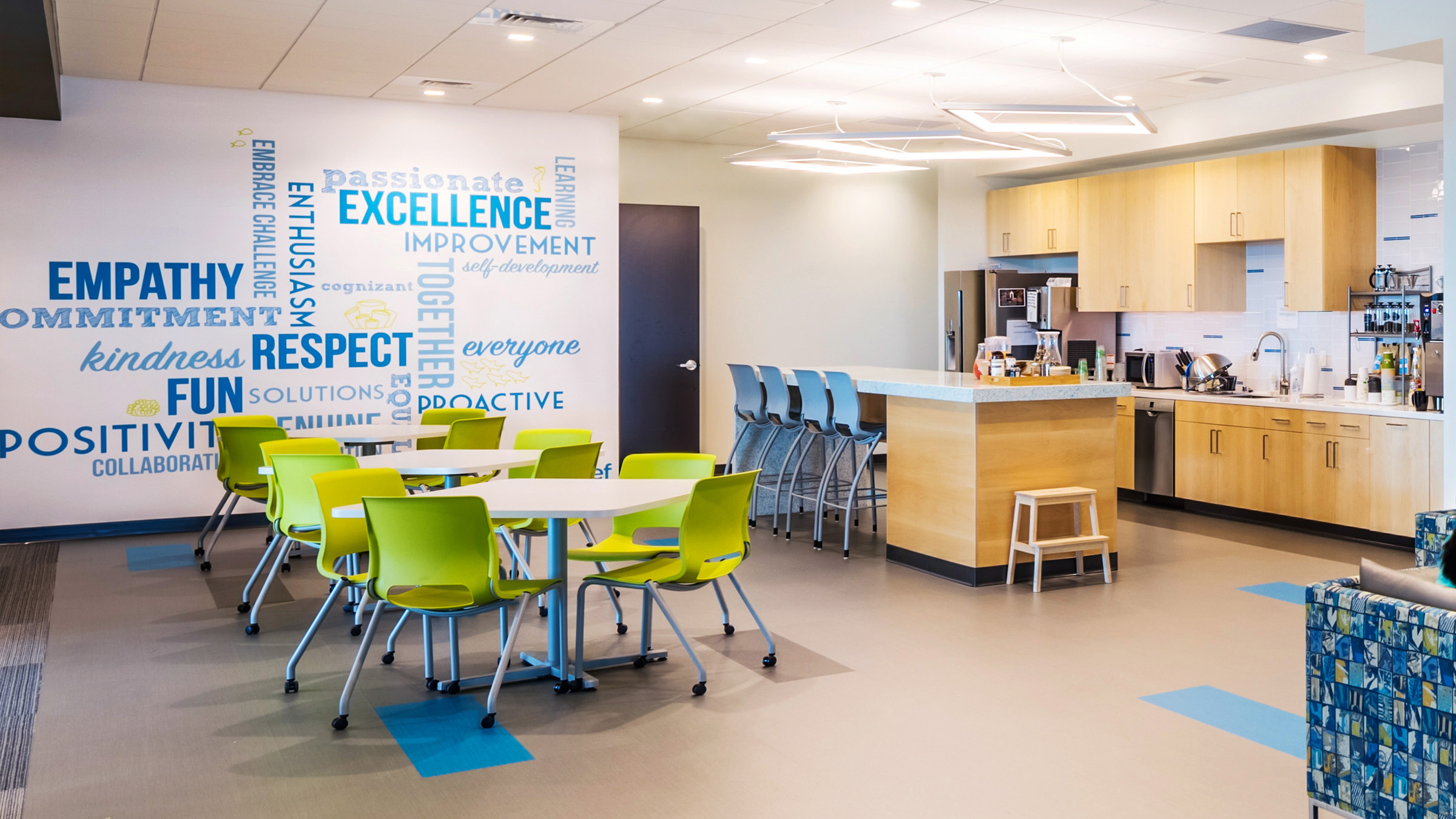
This versatile meeting and dining area at Mythics, Inc. is enlivened by pops of color and multiple seating options, providing an enjoyable space for employees to collaborate over coffee, be alone together or work individually. The visual representation of core values reinforces the connection between culture and workplace. Photo by Mario Gandia.
Environments for Varied Thinking (A Habitat for the “Multiple Intelligences”)
The most effective workplaces – like successful cities – address the needs of a diverse group of people through varied space typologies. The workplace will be at its very best when it can boldly support each of the multiple intelligences (the modes of thinking and learning explicated by Harvard professor and developmental psychologist, Howard Gardner) at the scale of both the individual and the group.
Gardner believed that we all have many different learning styles and that we should not just concentrate on the two primary kinds of intelligence: verbal/linguistic and logical/mathematical, but additionally the musical, spatial, kinesthetic, interpersonal, intrapersonal, and naturalist. While an organization is comprised of people working towards a common goal, recognizing these different work styles should justify a variation in the way we design and build a workplace – with breakout rooms for movement, more intimate areas for the quiet thinker, and collaborative spaces for the interpersonal brain. In the same way that some individuals learn material (such as vocabulary words) with flash cards and others use singing or movement, workplaces and productive spaces should cultivate habitats for all styles.
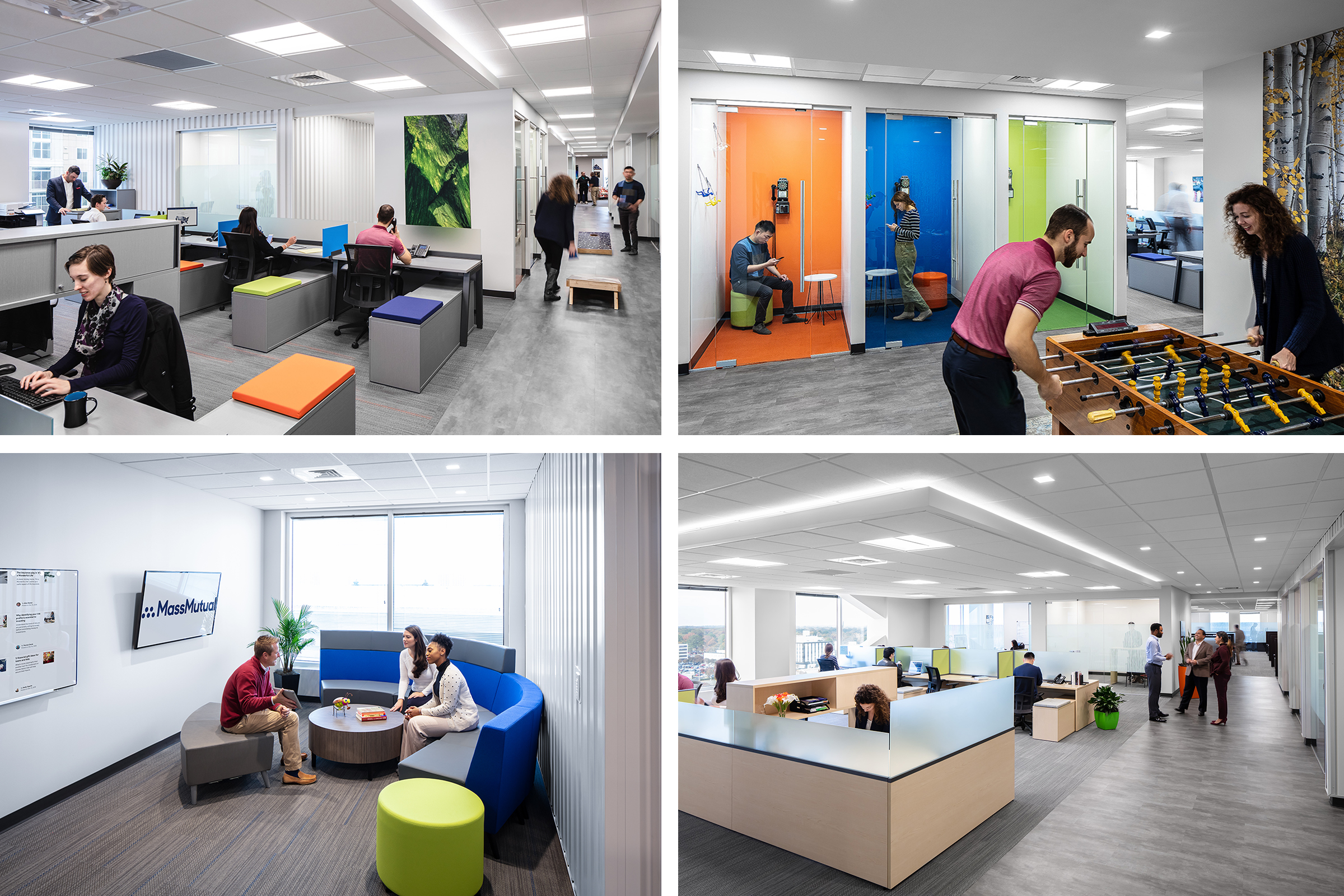
Pictured above, the new Mass Mutual office features a variety of spaces to meet diverse work styles and generational preferences. Organized by “neighborhoods,” some office areas are geared to workers who prefer more traditional work spaces while others are open and playful. Private rooms for phone calls or focused work balance with more active, collaborative environments. Photos by Keith Isaacs.
Like a splash of street art along a building wall or a community of people centered around their cultural practices, the workplace thrives best when approached as a living, social organism. It is the urban tangle of buildings, streets, businesses, homes, restaurants, entertainment, infrastructure, and people that define a bustling city; when aligning an organization with these same precedents, designers and businesses can uncover a practical yet highly functional model for positive morale, productivity, and overall organizational success.
Photo: New York City circa 2017 by Ryan DeBardinas / Shutterstock.

Paul Battaglia, AIA, was a principal and vice president of Business Development who joined Clark Nexsen in 2011. Paul left in 2022.
